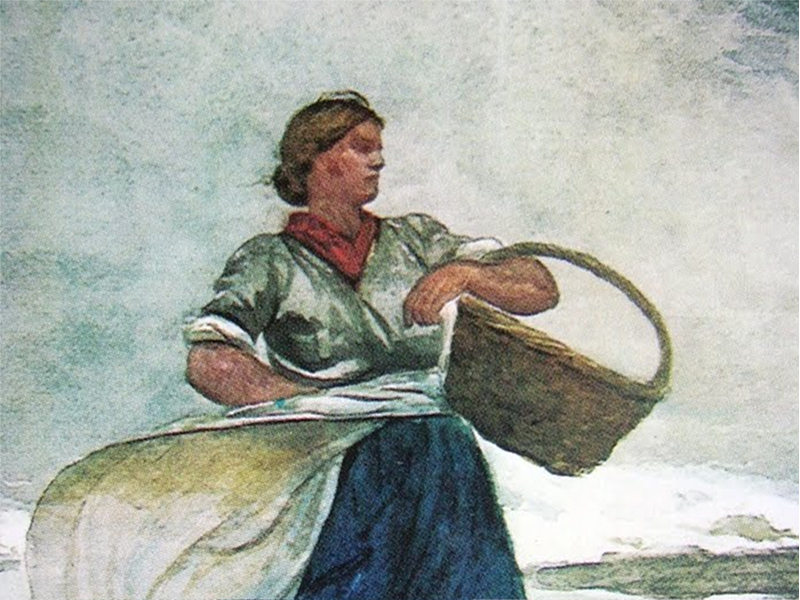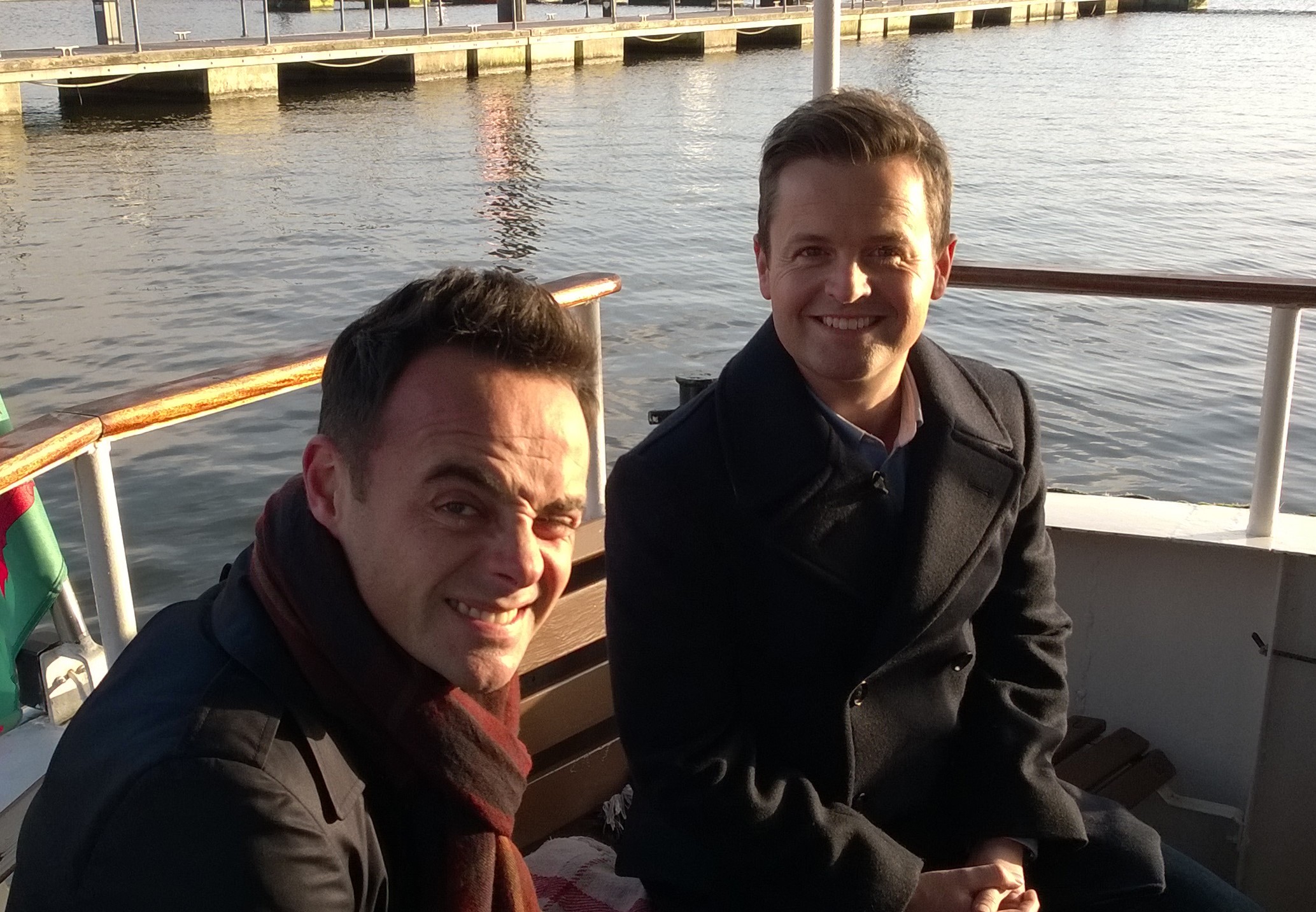|
The Cullercoats Fish Lass
"The Cullercoats Fish Lass" is a folk song, written by Edward Corvan, originally printed as a broadside in 1862 and collated in Allan's Illustrated Edition of Tyneside Songs and Readings in 1891. ''Fish Lass'' is a Geordie term for a fishwife. The Cullercoats Fish Lass was a term for a fishwife from Cullercoats, a small fishing village near the mouth of the Tyne. The Cullercoats Fish Lass was popular with locals and tourists alike. Jean F Terry wrote, in 1913, "The Cullercoats fishwife, with her cheerful weather-bronzed face, her short jacket and ample skirts of blue flannel, and her heavily laden "creel" of fish is not only appreciated by the brotherhood of brush and pencil, but is one of the notable sights of the district". Performances The song was very popular in its day and was probably performed by the composer, Ned Corvan, in drag. Almost all of Corvan's works are examples of the traditional dialect of Tyneside (known as Geordie) in the mid-19th century. Ned Cor ... [...More Info...] [...Related Items...] OR: [Wikipedia] [Google] [Baidu] |
Geordie Dialect Words
Geordie () is a nickname for a person from the Tyneside area of North East England, and the dialect used by its inhabitants, also known in linguistics as Tyneside English or Newcastle English. There are different definitions of what constitutes a Geordie. The term is used and has been historically used to refer to the people of the North East. A Geordie can also specifically be a native of Tyneside (especially Newcastle upon Tyne) and the surrounding areas. Not everyone from the North East of England identifies as a Geordie. Geordie is a continuation and development of the language spoken by Anglo-Saxon settlers, initially employed by the ancient Brythons to fight the Pictish invaders after the end of Roman rule in Britain in the 5th century. The Angles, Saxons and Jutes who arrived became ascendant politically and culturally over the native British through subsequent migration from tribal homelands along the North Sea coast of mainland Europe. The Anglo-Saxon kingdoms that eme ... [...More Info...] [...Related Items...] OR: [Wikipedia] [Google] [Baidu] |
Edward Corvan
Edward "Ned" Corvan (c. 1830 – 1865) was a Tyneside concert hall songwriter and performer, and a contemporary of George "Geordie" Ridley. His songs were printed in a modified English orthography designed to represent the traditional dialect of Tyneside in the middle of the 19th century, and are examples of Dialect Literature. Biography Corvan was born in Liverpool some time around 1830, but his family moved to Newcastle Upon Tyne when he was four years old. His father died three years later. Corvan was raised by his widowed mother who struggled to feed the family of four on her meagre earnings. After a brief career as a sail-maker Corvan joined Billy Purvis's Victoria Theatre. Here he tried his hand at a number of things, but found most success in the performance of local and comic songs. Ned then went on to join the Olympic where he enjoyed great success with songs such as "Astrilly". With this popularity he travelled the North singing his Tyneside songs, eventually settli ... [...More Info...] [...Related Items...] OR: [Wikipedia] [Google] [Baidu] |
Broadside (printing)
A broadside is a large sheet of paper printed on one side only. Historically in Europe, broadsides were used as posters, announcing events or proclamations, giving political views, commentary in the form of ballads, or simply advertisements. In Japan, Chromoxylographic broadsheets featuring artistic prints were common. Description and history The historical type of broadsides, designed to be plastered onto walls as a form of street literature, were ephemera, i.e., temporary documents created for a specific purpose and intended to be thrown away. They were one of the most common forms of printed material between the sixteenth and nineteenth centuries. They were often advertisements, but could also be used for news information or proclamations. Broadsides were a very popular medium for printing topical ballads starting in the 16th century. Broadside ballads were usually printed on the cheapest type of paper available. Initially, this was cloth paper, but later it became common ... [...More Info...] [...Related Items...] OR: [Wikipedia] [Google] [Baidu] |
Allan's Illustrated Edition Of Tyneside Songs And Readings
''Allan's Illustrated Edition of Tyneside Songs and Readings'' is a book of Tyneside popular and traditional songs consisting of approximately 400 song lyrics on over 600 pages, published in 1891. It was reprinted in 1972 by Frank Graham, Newcastle upon Tyne, with an introduction by David Harker. Publication of ''Tyneside Songs'' In 1862 Thomas Allan published the first book in this series, which was called "Tyneside songs". The first edition was very small and covered mainly songs of Edward “Ned” Corvan and George "Geordie" Ridley. Over the years he developed the book, adding to it, until eventually it became an extremely large volume with almost 600 pages and contained 400 songs. The name was changed to Allan's Tyneside Songs, and the contents increased to cover not just the songs but details and histories of them, their writers and singers. As it developed the theme changed from one of solely popular songs to encompass many older traditional songs, aiming to spread the ... [...More Info...] [...Related Items...] OR: [Wikipedia] [Google] [Baidu] |
Geordie
Geordie () is a nickname for a person from the Tyneside area of North East England, and the dialect used by its inhabitants, also known in linguistics as Tyneside English or Newcastle English. There are different definitions of what constitutes a Geordie. The term is used and has been historically used to refer to the people of the North East. A Geordie can also specifically be a native of Tyneside (especially Newcastle upon Tyne) and the surrounding areas. Not everyone from the North East of England identifies as a Geordie. Geordie is a continuation and development of the language spoken by Anglo-Saxon settlers, initially employed by the ancient Brythons to fight the Pictish invaders after the end of Roman rule in Britain in the 5th century. The Angles, Saxons and Jutes who arrived became ascendant politically and culturally over the native British through subsequent migration from tribal homelands along the North Sea coast of mainland Europe. The Anglo-Saxon kingdoms that e ... [...More Info...] [...Related Items...] OR: [Wikipedia] [Google] [Baidu] |
Fishwife
A fishwife, fish-fag or fishlass is a woman who sells fish. Some wives and daughters of fishermen were notoriously loud and foul-mouthed, as noted in the expression, ''To swear like a fishwife'' as they sold fish in the marketplace. One reason for their outspokenness is that their wares were highly perishable and so lost value if not sold quickly. Also, having to manage alone while their menfolk were away fishing for extended periods, they needed to become strong and self-sufficient. Fishwives in fishing villages such as Cullercoats and Newhaven were noted for their beauty, hardiness and industry and were celebrated by artists and royalty. In this context, the word ''wife'' means ''woman'' rather than ''married woman'', from the Old English ''wif'' (woman). Billingsgate London's traditional fish market was frequented by such types who were known as "''the wives of Billingsgate''". "''They dressed in strong 'stuff' gowns and quilted petticoats; their hair, caps and bonnet ... [...More Info...] [...Related Items...] OR: [Wikipedia] [Google] [Baidu] |
Cullercoats
Cullercoats is a coastal settlement in the metropolitan borough of North Tyneside, Tyne and Wear, North East England. Historically in Northumberland, it has now been absorbed into the wider Tyneside conurbation, sitting between Tynemouth to the south and Whitley Bay to the north. The population of this North Tyneside ward at the 2011 census was 9,202. There is a semi-circular sandy beach with cliffs and six caves, and the village is a popular destination for day-trippers. It also acts as an attractive dormitory town for nearby Newcastle upon Tyne. The name is thought to derive from dove (or "culver") Dovecote, cotes. History and architecture Cullercoats village was founded in 1539. Historically the village depended on fishing; there was also local coal mining in so-called bell pits. The coal was used to fire salt pan (evaporation), salt pans (now long gone) on the field now known as the boat field. As a port, Cullercoats was used to export both salt and coal from the 1670s. A ... [...More Info...] [...Related Items...] OR: [Wikipedia] [Google] [Baidu] |
River Tyne
The River Tyne is a river in North East England. Its length (excluding tributaries) is . It is formed by the North Tyne and the South Tyne, which converge at Warden Rock near Hexham in Northumberland at a place dubbed 'The Meeting of the Waters'. The Tyne Rivers Trust measure the whole Tyne catchment as , containing of waterways. Course North Tyne The North Tyne rises on the Scottish border, north of Kielder Water. It flows through Kielder Forest, and in and out of the border. It then passes through the village of Bellingham before reaching Hexham. South Tyne The South Tyne rises on Alston Moor, Cumbria and flows through the towns of Haltwhistle and Haydon Bridge, in a valley often called the Tyne Gap. Hadrian's Wall lies to the north of the Tyne Gap. Coincidentally, the source of the South Tyne is very close to those of the Tees and the Wear. The South Tyne Valley falls within the North Pennines Area of Outstanding Natural Beauty (AONB) – the second largest of the ... [...More Info...] [...Related Items...] OR: [Wikipedia] [Google] [Baidu] |
Drag Queen
A drag queen is a person, usually male, who uses drag clothing and makeup to imitate and often exaggerate female gender signifiers and gender roles for entertainment purposes. Historically, drag queens have usually been gay men, and part of gay culture. People partake in the activity of ''doing drag'' for reasons ranging from self-expression to mainstream performance. Drag shows frequently include lip-syncing, live singing, and dancing. They occur at events like LGBT pride parades, carnivals and drag pageants and in venues such as cabarets and nightclubs. Drag queens vary by type, culture, and dedication, from professionals who star in films and spend a lot of their time in their drag persona, to people who do drag only occasionally. Those who do occasional drag may be from other backgrounds than the LGBT community. There is a long history of folkloric and theatrical crossdressing that involves people of all orientations. Not everyone who does drag at some point in the ... [...More Info...] [...Related Items...] OR: [Wikipedia] [Google] [Baidu] |
Music Hall
Music hall is a type of British theatrical entertainment that was popular from the early Victorian era, beginning around 1850. It faded away after 1918 as the halls rebranded their entertainment as variety. Perceptions of a distinction in Britain between bold and scandalous ''Music Hall'' and subsequent, more respectable ''Variety'' differ. Music hall involved a mixture of popular songs, comedy, speciality acts, and variety entertainment. The term is derived from a type of theatre or venue in which such entertainment took place. In North America vaudeville was in some ways analogous to British music hall, featuring rousing songs and comic acts. Originating in saloon bars within public houses during the 1830s, music hall entertainment became increasingly popular with audiences. So much so, that during the 1850s some public houses were demolished, and specialised music hall theatres developed in their place. These theatres were designed chiefly so that people could consume food ... [...More Info...] [...Related Items...] OR: [Wikipedia] [Google] [Baidu] |
Detail Of A Cullercoats Fishlass, 1883
Detail(s) or The Detail(s) may refer to: Film and television * ''Details'' (film), a 2003 Swedish film * ''The Details'' (film), a 2011 American film * ''The Detail'', a Canadian television series * "The Detail" (''The Wire''), a television episode Music * ''Details'' (album), by Frou Frou, 2002 * Detail (record producer), Noel Fisher (born c. 1978), American music producer and performer * The Details, a Canadian rock band Periodicals * ''DETAIL'' (professional journal), an architecture and construction journal * ''Details'' (magazine), an American men's magazine See also * Auto detailing, a car-cleaning process * Level of detail (computer graphics), a 3D computer graphics concept * Security detail, a team assigned to protect an individual or group * Detaille Island Detaille Island is a small island off the northern end of the Arrowsmith Peninsula in Graham Land, Antarctica. From 1956 to 1959 it was home to "Base W" of the British Antarctic Survey and closed after the ... [...More Info...] [...Related Items...] OR: [Wikipedia] [Google] [Baidu] |
Cullercoats Fish Lass Original Lyrics
Cullercoats is a coastal settlement in the metropolitan borough of North Tyneside, Tyne and Wear, North East England. Historically in Northumberland, it has now been absorbed into the wider Tyneside conurbation, sitting between Tynemouth to the south and Whitley Bay to the north. The population of this North Tyneside ward at the 2011 census was 9,202. There is a semi-circular sandy beach with cliffs and six caves, and the village is a popular destination for day-trippers. It also acts as an attractive dormitory town for nearby Newcastle upon Tyne. The name is thought to derive from dove (or "culver") cotes. History and architecture Cullercoats village was founded in 1539. Historically the village depended on fishing; there was also local coal mining in so-called bell pits. The coal was used to fire salt pans (now long gone) on the field now known as the boat field. As a port, Cullercoats was used to export both salt and coal from the 1670s. A new harbour and pier were constru ... [...More Info...] [...Related Items...] OR: [Wikipedia] [Google] [Baidu] |



.png)




